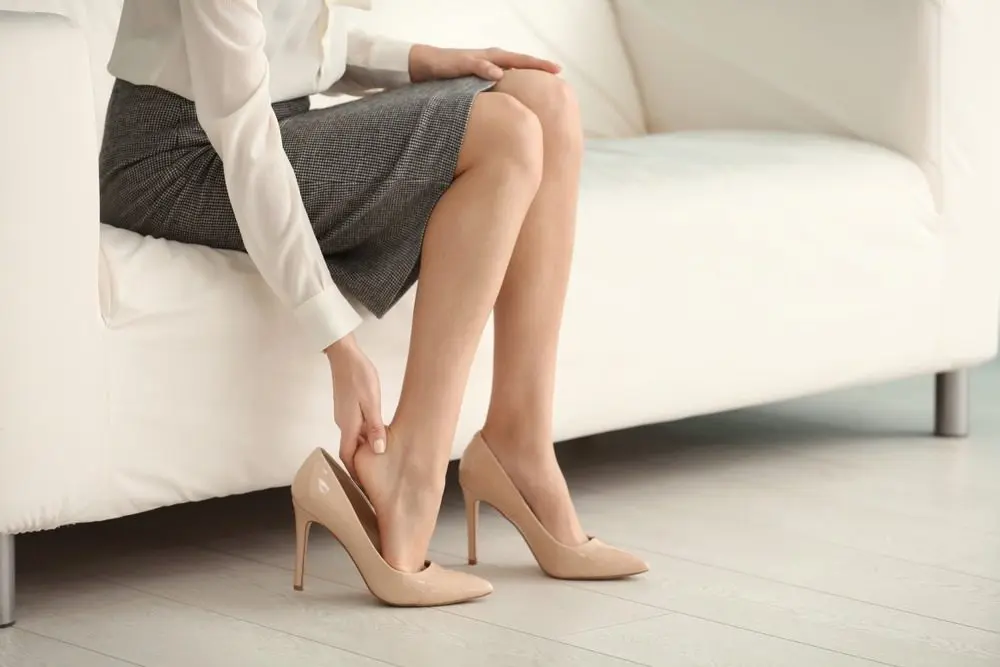
Heel bursitis (also known as calcaneal bursitis) is a painful disease that can make daily activities difficult. This foot condition arises when a bursa, a sac that secretes synovial fluid and serves to lubricate the joint between the bone and the tendon, becomes inflamed.
Although heel bursitis is usually harmless, it is nonetheless painful and uncomfortable. If you believe you have it, you should get assistance as soon as possible. You’ll be back on your feet in no time with the correct intervention at the right moment!
However, some people, particularly athletes, continue to participate in sports despite chronic bursitis. This might aggravate the bursitis, producing extra foot discomfort and worsening the inflammation.
PiedReseau explains the many methods for detecting, treating, and avoiding this condition.
Heel bursitis symptoms
To determine when to see a podiatrist, you must first understand the most common symptoms of bursitis. Keep a close eye on the signals:
- Gnawing at the heels
- Swelling of the heel
- A feeling of stiffness
- Lesions on the skin
- A sensation of friction of the heel in the shoe
Of course, the pain you are experiencing is of varying degrees of severity. Furthermore, the symptoms of heel bursitis differ depending on the location of the bursitis. The calcaneus (heel bone) and the Achilles tendon can, in fact, develop this disease. It can also happen in the area just in front of the Achilles tendon.
Causes of heel bursitis
Heel bursitis can manifest itself in a variety of ways. And therapy differs according to the cause of the discomfort.
The following are the primary reasons of this foot problem:
- Physical factors, such as shoes that are too tight, repeated movements or overloading the feet during sports
- Foot trauma, which causes the bursa to fill with blood
- Inflammatory diseases, such as arthritis or gout
- Certain bacteria that cause foot infections (septic bursitis)
- Too acidic a diet, which makes your joints and tissues more prone to inflammation
You should see a podiatrist regardless of the reason for your bursitis. This foot care expert will know how to apply the most effective therapy to ease your pain.
Preventing heel bursitis
It is possible to decrease the chances of developing heel bursitis to the greatest extent feasible. You may help yourself by doing the following steps:
- Wear well-fitting shoes
- Allow your foot to rest
- Keep a healthy weigh
- Avoid putting too much pressure on your feet
Home remedies for heel bursitis
There are several home treatments that might help you feel better if you have bursitis. A visit to the podiatrist is still recommended afterwards.
Ice: Putting ice on your bursitis might sometimes be enough to ease the discomfort.
Anti-inflammatory medications: There are several non-steroidal medications that can help relieve the inflammatory pain of your bursitis. Your podiatrist can prescribe or recommend them as necessary.
The podiatrist’s care
The podiatrist will need to do an ultrasound of your foot to determine the specific origin and severity of your bursitis. In this method, they’ll be able to tell if the discomfort you’re experiencing is truly bursitis. Then they will devise the optimal treatment strategy for you.
Ultrasound therapy for the feet provides a number of advantages for patients:
- It is risk-free
- It is completely painless
- It assists the podiatrist in making a diagnosis
- It helps you to keep track of your recovery progress
The podiatrist will utilize a variety of therapies to assist you get rid of that pesky bursitis, based on the circumstances. The methods used vary depending on the cause and severity of your condition.
Learn more about treatment options:
- Ultrasound
- Laser treatment
When conservative therapies are ineffective, your podiatrist may choose to treat you with laser therapy.
This non-invasive, fully safe procedure speeds up healing, lowers inflammation, and strengthens the tissue.
In most cases, 2 to 6 treatments are needed to completely cure your bursitis. The frequency will be determined by the podiatrist based on your condition.
- The ShockWave
In podiatry, shockwave therapy is a relatively recent treatment. The ShockWave was originally designed to treat kidney stones, but it is currently utilized to treat a variety of foot problems.
The ShockWave creates microtrauma in the treated foot region by releasing acoustic waves. The body responds by focusing all of its energy on the afflicted location. The healing of your bursitis is also hastened at the same time.
This procedure is used to treat persistent foot discomfort. It is, however, contraindicated in several circumstances. Your podiatrist will know if the ShockWave is right for you.
- Foot orthoses
It is occasionally necessary to wear a custom-made foot orthosis in order to recover successfully. This sort of orthotic will fix specific biomechanical flaws in your foot, preventing heel bursitis from recurring.
- Cortisone injection (or infiltration)
Cortisone injections are utilized in more extreme instances where bursitis-related inflammation is a major factor. Cortisone can relieve excruciating discomfort and, in certain circumstances, help you prepare for podiatric surgery.
Heel bursitis that is more serious may necessitate surgery by a podiatric surgeon. This is, however, a last resort.
PiedRéseau: to effectively cure your heel bursitis
PiedRéseau is a network of forty podiatry clinics in Quebec that work together to make you feel better every day.
The network’s podiatrists can assist you in receiving the most appropriate therapy for your needs using the most up-to-date equipment and unwavering knowledge. However, you must see them fast in order to do so!